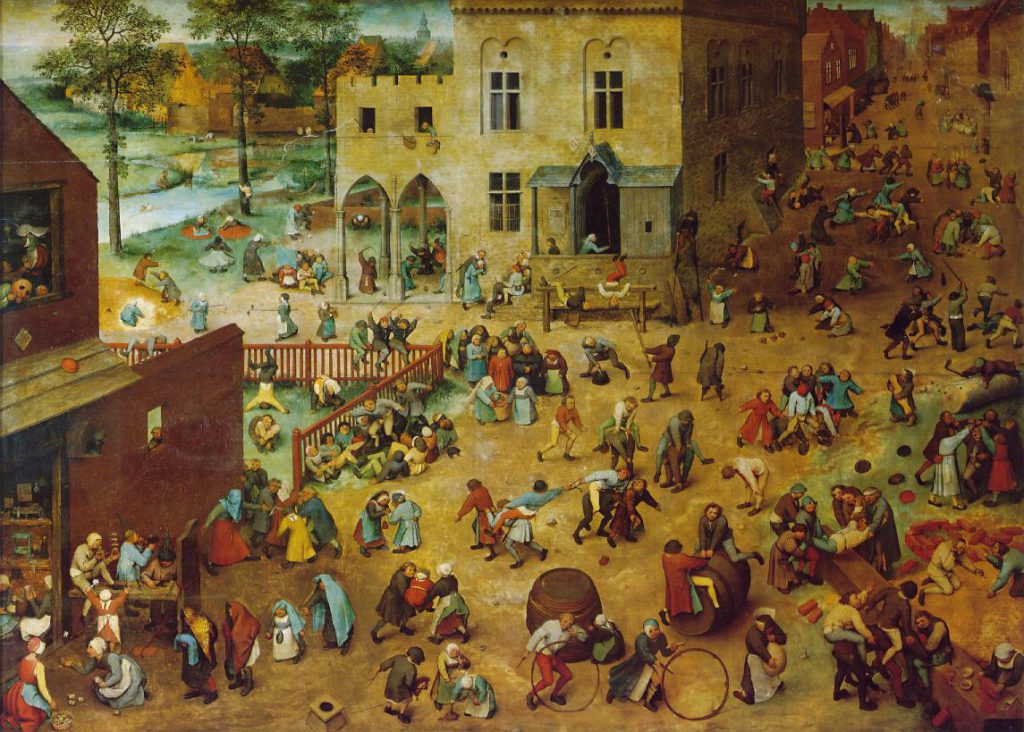Misplaying a game blurs the boundary between player and designer.
Players have always fixed, customized, modded games (house rules). Almost all pre-digital games don’t have a single designer, they are folk creations.
Digital games are more commodified and therefore more fixed and designed. Modifying and misplaying them requires a bit more effort and attitude.

Trespassing game boundaries
Virtual photographer Robert William Overweg made a series of surreal landscapes called the end of the virtual world documenting the boundaries of designed territories.
Even procedurally generated worlds like Minecraft are not really infinite.
According to the developers “there’s no hard limit in Minecraft, it will just get buggier and buggier the further our you are” (I presume that’s due to the limits of the floating point variables used to generate the worlds).
The Grannies, a documentary about a gang of boundary breakers.
Exploring the system’s boundaries
Beyond the spatial dimension, on a more conceptual level, games have boundaries too.
What the games simulate and represent is limited both in scope and quality.
A “subversive” player may attempt to probe these boundaries.
Exploring the hidden lives of NPCs
Machinima – using games for storytelling
See also the first Pacifist Runs
Magnasanti – reverse engineering SimCity
Me testing the limits of Crusader Kings 3
Cities: Skylines | Power, Politics, & Planning by donoteat – talking about real urban issue while playing Cities Skylines
Breaking Madden modding NFL games to discover the sublime in football.
Modding GTA to create a post-human live stream
Counter Strike surfing (Mod)
Prepared playstation by RSG (2005) finding game loops
Glitch Hunting in Skate 2
Extreme speedrunning
Is cheating subversive play?
Gold Farming – in game economies essentially started as cheating/outsourced “playbor”.
No wrong way to play
A blog devoted to unusual ways to play videogames (2013-2017)
It captured the emergence of “challenges” now very common in game streaming. (Minecraft, GTA)
Alternative interfaces
Massage me by Mika Satomi and Hannah Perner-Wilson
Animal play
Game performances and online protests
In-game protest about issues related to the games themselves have been recorded since the late 90s
Ultima Online players storm the game designer’s castle to complain about bugs
The million gnome march protesting the “nerfing” of the gnome class
Artists were the first to envision online games as spaces for activism around real world issues.
Velvet Strike by Anne-Marie Schleiner, Joan Leandre, Brody Condon
Joseph Delappe’s interventions.
The Council on Gender Sensitivity and Behavioral Awareness in World of Warcraft by Angela Washko
“For four years, I created performances as The Council on Gender Sensitivity and Behavioral Awareness in World of Warcraft inside the most popular online multiplayer role-playing video game of all time. As a long-time community member, I stopped playing the game “normally” and began traveling to major towns to discuss the oppressive ways in which women were treated in the game-space with other players. This led to longer discussions about feminism with players from geographically varied places meeting together in this virtual public space.”
Also see all the other Total Refusal interventions
Official political campaigns and counter protests happened regularly Second Life
Fast forward to recent times…
Hong Kong democracy protesters and counter protester clashing in GTA online
Black Lives Matter in animal crossing and the Sims
Roblox Gaza protests
Circumventing censorship through minecraft
Although games are not necessarily free from government surveillance.
After 9-11 law enforcement really thought terrorists were coordinating online to circumvent surveillance:
“so many C.I.A., F.B.I. and Pentagon spies were hunting around in Second Life, the document noted, that a “deconfliction” group was needed to avoid collisions — the intelligence agencies may have inflated the threat.” – NYT




